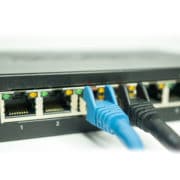The Impact of Patch Cord Types on the Network
Data Centers and the networks they support have expanded to be an integral part of every business. The software applications that keep mission-critical operations up and running in highly redundant, 24/7 environments rely on highly engineered structured cabling systems to connect the cloud to every user. Structured cabling is the foundation that supports data centers.
Although structured cabling is not as sexy as diesel-driven UPS systems or adiabatic cooling systems, it contributes a huge role in supporting the cloud. One important component of structured cabling that is often overlooked: patch cords.
Oftentimes, patch cords are purchased haphazardly and installed at the last minute. But the right patch cord type can improve the performance of your network. The proper design, specification, manufacturing, installation and ongoing maintenance of patch cord systems can help ensure that your network experiences as much uptime as possible.
A patch cord problem can wreak havoc on an enterprise, from preventing an airline customer from making a necessary reservation change to keeping a hotel guest from getting work done while on business travel.
What Drives Data Growth?
Explosive data growth due to social media, video streaming, IoT, big data analytics and changes in the data center environment (virtualization, consolidation and high-performance computing) means one thing: Data traffic is not only growing in bandwidth, but also in speed.
Another essential point is network design. Today’s network design, such as a leaf-spine fabric, makes the network flatter, which lowers latency – this makes the Ethernet and corresponding patch cord types incredibly important.
The Definition of a Patch Cord
A patch cord is a cable with a connector on both ends (the type of connector is a function of use). A fiber patch cord is sometimes referred to as a “jumper.”
Patch cords are part of the local area network (LAN), and are used to connect network switches to servers, storage and monitoring portals (traffic access points). They are considered to be an integral part of the structured cabling system.
Copper patch cords are either made with solid or stranded copper; due to potential signal loss, lengths are typically shorter than connector cables.
A fiber patch cord is a fiber optic cable that is capped at both ends with connectors. The caps allow the cord to be rapidly connected to an optical switch or other telecommunications/computer device. The fiber cord is also used to connect the optical transmitter, receiver and terminal box.
Read full article





